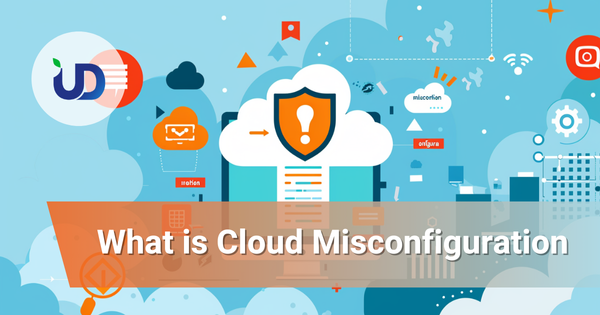Why Cloud Misconfigurations Are Causing More Breaches Than Hackers: A Practical Guide for Modern Businesses
Cloud adoption has exploded across every industry, but with that growth comes a silent and often underestimated risk: cloud misconfigurations. While many organisations worry about sophisticated cyberattacks or advanced hacker techniques, the truth is far more unglamorous—most cloud breaches today are caused by simple human mistakes, not elite threat actors.
When a company deploys systems in AWS, Azure or Google Cloud without proper configuration checks, a single exposed bucket, over-permissioned account, forgotten port or overly relaxed security policy can unintentionally open the door for attackers. This article breaks down why misconfigurations have become the top cause of cloud security incidents and what every business can do to prevent them.
The Hidden Threat: How a Small Configuration Mistake Becomes a Massive Exposure
One of the biggest misconceptions about cloud security is assuming the provider will handle everything. In reality, the cloud operates under a shared responsibility model.
The cloud provider secures the infrastructure
You, the customer, secure everything you put inside the cloud
This means that every setting, permission and policy you create can either strengthen your security posture or create a vulnerability.
Misconfigurations typically happen when environments grow quickly, teams move fast, or multiple administrators work in the same cloud account without strict governance. These mistakes are accidental, but attackers actively scan for them. Once discovered, exploitation requires little skill—no malware, no phishing, no complex attack chain. Just an open door.
Why Misconfigurations Are More Dangerous Than Traditional Hacks
Traditional cyberattacks often require time, expertise and significant resources. Misconfigurations, however, require none of that.
Attackers simply look for publicly exposed databases
They search for open ports or unsecured APIs
They exploit excessive permissions to escalate privileges
Because the cloud is always online, the attack surface is constantly visible. A misconfigured asset can be discovered within minutes by automated scanners used by both ethical researchers and malicious actors.
Many major cloud breaches in the past few years didn’t involve zero-day exploits—they were the result of unsecured storage buckets, unprotected servers or overly broad IAM roles. These incidents tend to be fast, silent and devastating, often leading to data leaks, credential theft and full environment compromise.
The Most Common Cloud Misconfigurations (And Why They Happen So Often)
Cloud environments contain thousands of settings, and missing just one critical configuration can be costly.
Overly permissive IAM roles
Publicly accessible storage buckets
Unrestricted inbound firewall rules
Lack of encryption
Misconfigured API gateways
Disabled logging or monitoring
Shadow cloud resources created without review
These issues happen not because teams lack skills, but because cloud environments evolve rapidly.
Developers deploy new services
Operations teams adjust settings to fix issues
Security teams are often stretched thin
Without automated governance or regular reviews, misconfigurations accumulate like technical debt.
Why Attackers Love Misconfigurations
From an attacker’s perspective, misconfigurations remove the hardest part of hacking—breaking in.
A publicly exposed database is a data breach waiting to be downloaded
An unsecured API can reveal sensitive system information
An over-permissioned account can give access to the entire environment
Cloud misconfigurations offer high reward with almost zero effort, making them the most exploited cloud vulnerabilities worldwide.
How to Prevent Cloud Misconfigurations: Practical Steps for Every Business
Fixing and avoiding misconfigurations requires a mix of strategy and automation.
Enforce least-privilege access
Set configuration baselines
Use CSPM tools for continuous posture monitoring
Adopt Infrastructure-as-Code
Enable audit logs and monitoring
Schedule regular cloud pentests and security reviews
This proactive approach dramatically reduces the risk of unintended exposures.
Why Continuous Cloud Review Matters More Than Ever
Cloud environments are dynamic. New services are added, permissions drift, and teams make quick changes that can introduce risks.
A secure configuration today may not be secure next month.
Continuous assessments ensure misconfigurations are detected and fixed before attackers discover them. As organisations adopt multi-cloud strategies, maintaining visibility becomes even more important.
Final Thoughts: Misconfigurations Aren’t Just Technical—They’re Operational
Cloud misconfigurations continue to cause more breaches than hackers not because companies lack tools, but because cloud environments are fast-changing and complex.
The good news? They’re preventable.
With the right processes, automation and regular reviews—such as pentest, SRAA assessments and MSSP monitoring—businesses can significantly reduce cloud risk and avoid costly breaches.
Companies that treat cloud configuration as a continuous responsibility will be far better protected against tomorrow’s threats.
🛡️ Ready to Strengthen Your Security?
UD is a trusted Managed Security Service Provider (MSSP)
With 20+ years of experience, delivering solutions to 50,000+ enterprises
Offering Pentest, Vulnerability Scan, SRAA, and a full suite of cybersecurity services to protect modern businesses




